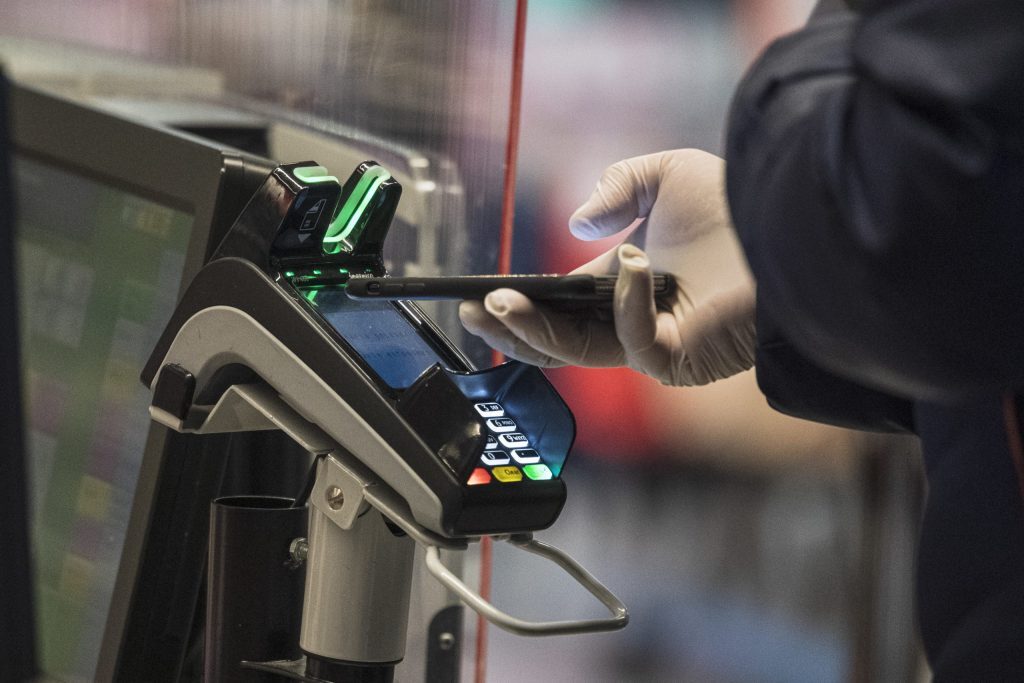A banknote has been sitting in my wallet for six months now. As time ticks on, it burns an ever greater hole in my pocket.
At first, I felt uneasy spending it, following COVID-19 warnings to pay more attention to hand hygiene and the surfaces we all touch on a daily basis.
Now I have less and less opportunity to do so. While the World Health Organisation has never advised against using cash, more and more businesses are displaying signs that read “We Only Accept Contactless Payment” next to their registers.
A recent global poll conducted by MasterCard – a company with reason to favour card-based payments – found 82% of its users see contactless payments as cleaner than cash.
Online shopping is booming too. Amazon’s value alone has risen by 570 billion US dollars this year.
But while electronic payments may reduce our exposure to germs, it also shows banks, vendors and payment platforms what we do with our money. Social media is awash with posts condemning the forced use of contactless payment for fear of overseers eyeballing spending. Some people are even boycotting stores that won’t accept cash.
https://twitter.com/LeProfMoriarty/status/1301043738475720704?
The growth of digital transactions exposes yet another aspect of our personal life too, what the social psychologist Shoshana Zuboff has called, “surveillance capitalism”. Financial data is now a valuable raw material that can be bought, sold and refined in the name of profit.
The decline of cash
When the pandemic began, cash had already been on the decline for years. In Australia, demand for coins fell by more than 50% between 2013 and 2019.
For many people, increasing digitisation is synonymous with progress. It can be seen as a way of leaving the cumbersome, historical artefacts of coins and banknotes behind.
COVID-19 has accelerated this move away from cash. Wariness of microbe-ridden banknotes has seen contactless payment become a spontaneous public health standard.
Because cash is a social material, it moves between us, connecting us both financially and physically. The US Federal Reserve even decided to quarantine dollars returning from Asia earlier this year in an attempt to stop the coronavirus crossing its borders.
Dropping digital breadcrumbs
One perk of paper money is that it does not leave paper trails. Digital money, however, leaves traces in the databases of banks, vendors and platform owners, while governments look keenly over their shoulders.
Financial journalist Brett Scott calls this a “prison of watchable payments”.
Tax officials love digital transactions because they make it easier to monitor the nation’s economy. Banks and payment platforms are pleased as well: not only do they collect fees and gain the ability to allow or obstruct transactions, they can also profit from the troves of personal data piling up on their servers.
Internally, banks use this data to offer you other bespoke services such as loans and insurance. But information is also aggregated to better understand wider economic trends, and then sold on to third parties.
At the moment, these data metrics are anonymised but that doesn’t guard against retailers using de-anonymising techniques to attach transactions back to your identity.
Data brokers exist for this very reason: building digital profiles and creating a marketplace for them. This allows retailers to target you with tailored advertisements based on your spending. The devices at everyone’s fingertips become a feedback loop of information in which companies analyse what people have bought and then urge them to buy more.
Can surveillance work on your behalf?
Having records of every transaction can also be useful for individuals. Companies such as Revolut and Monzo offer “spending analytics” services to help customers manage their money by tracking where it goes each month.
But information about a user’s own behaviour never truly belongs to them. And, as the digital economist Nick Srnicek explains, “suppression of privacy is at the heart of the business model”.
Digital payment with (some) privacy
While filling virtual baskets or paying by tapping a card does open up transactions for inspection, there are still ways you can protect your health and your data at the same time.
“Virtual cards” like those provided by privacy.com are one useful tool. These services let users create multiple card numbers for different online purchases that conceal consumption patterns from banks and credit card details from merchants.
Cryptocurrencies might also find a new limelight in the pandemic. Hailed as cash for the internet, the inbuilt privacy mechanisms of Bitcoin, Zcash and Monero could work to mask transactions.
However, finding companies that accept them is challenging, and their privacy capabilities are often overstated for everyday users. This is particularly true when using exchanges and third-party wallet software such as Coinbase.
In brick-and-mortar stores, staying under the radar can be more difficult. Prepaid cards are one option – but you’ll need to buy the card itself with cash if you want to keep your anonymity fully intact. And that takes us back to square one.
- is a Digital Economist, Western Sydney University
- This article first appeared on The Conversation




